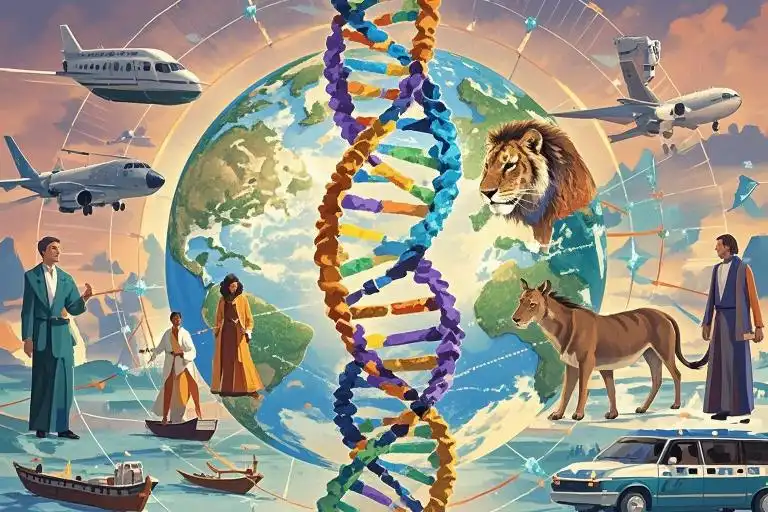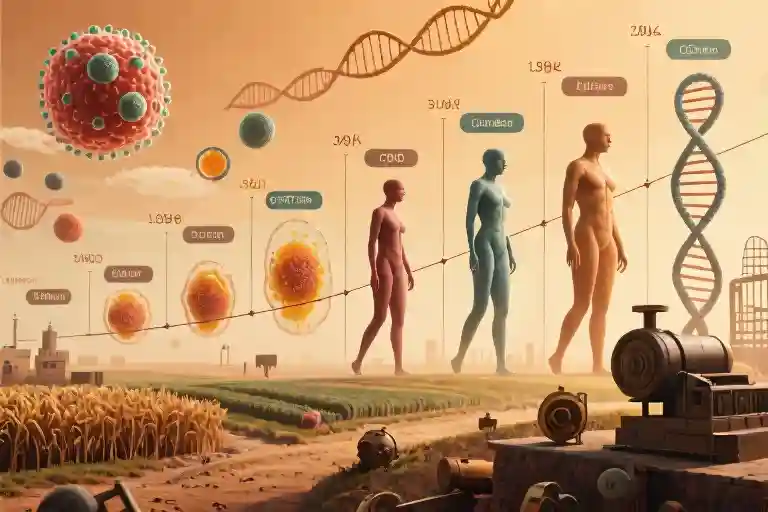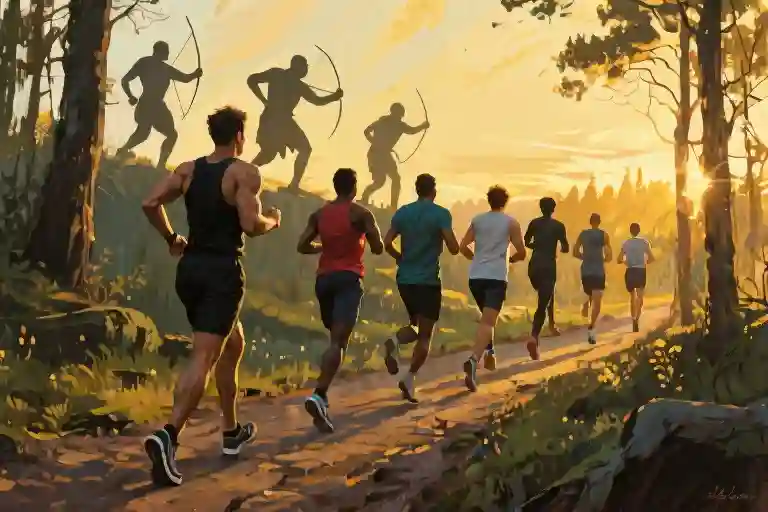Picture this: A group of adventurous humans crosses frozen tundras 20,000 years ago, their breath visible in the icy air as they become the first people to set foot in the Americas. Fast forward to 1492 – after 20 millennia of isolation – when European ships suddenly appear on the horizon. What happened next in the bedroom would shock biologists…
You might assume such lengthy separation would create entirely new human species. But here’s the twist: we’re all still one big genetic family. Let’s unravel this mystery through three eye-opening stories.
The Time Travelers’ Paradox
Meet our three accidental time capsules:
- Australia’s First Explorers
Their ancestors arrived 50,000 years ago when woolly mammoths still roamed. That’s 2,500 human generations – enough time for 625 Shakespearean dramas or 1,250 Olympic Games. Yet DNA proves they remained 99.9% genetically identical to other humans. - America’s Ice Age Pioneers
Imagine your family living in complete isolation from 14,000 BCE until Columbus’ arrival – longer than the entire history of writing systems. Still, their children could effortlessly blend genetically with newcomers. - Andaman Island Castaways
Stranded on an island smaller than Manhattan for 26,000 years, these seafaring people developed unique physical traits… but their genes still shout “we’re human!” to any potential partner.
Nature’s Speciation Stopwatch
Now let’s compare with Mother Nature’s typical timeline. Grab your lab coat – we’re going on a reproductive safari!
Case Study 1: The Mule Mystery
Horses and donkeys needed 1.05 million years apart just to create sterile hybrids. That’s like separating two human groups when our ancestors were still using stone tools in Africa. Even then, mules demonstrate partial compatibility through their 63 mismatched chromosomes – like trying to pair odd socks.
Case Study 2: Liger Love
Lions and tigers diverged 3 million years ago (150,000 human generations!), yet their hybrid cubs still surprise zookeepers. Female ligers can even reproduce – a genetic loophole that makes biologists’ eyebrows dance.
The Speedster Exception
Our oceans hold a rebel: the Baltic flounder. It achieved speciation in just 2,400 generations through radical chromosome changes. But here’s the kicker – humans tried similar tricks through isolation… and failed miserably.
The Great Human Remix
Now the plot thickens. Around 47,000 years ago, our ancestors pulled off history’s most successful blind date – with Neanderthals. Geneticists discovered:
- Modern Europeans/Asians carry 1-4% Neanderthal DNA
- Hybrid daughters were fertility champions
- Hybrid sons faced reproductive challenges
This “selective gene flow” worked like a biological filter, allowing useful traits (like immune system upgrades) to slip through while blocking problematic combinations. It’s nature’s version of “mix and match” shopping.
Why Technology Locked Our Genetic Fate
Here’s where human ingenuity changed the game. While animals rely on geographical barriers, we invented:
- Ice Age Canoes (50,000 BCE): Allowed sneaky genetic exchanges between “isolated” populations
- Bronze Age Trade Routes (3,000 BCE): Created constant DNA shuffling across continents
- Modern Transportation (1800 CE+): Made global gene flow faster than ever
Think of Earth as a simmering genetic stew. Every technological advance turned up the heat, preventing any ingredient from staying separate long enough to curdle into new species.
The Future of Human Evolution
So what’s next? Barring interstellar colonization, we’ve essentially paused biological speciation. Our DNA mixing now happens at light speed:
- 7% of Australian Aboriginals have European ancestry today
- 23andMe finds the average American has DNA from 5+ global regions
- International marriages create 1 million “genetic bridge” babies yearly
The numbers don’t lie – we’re becoming more genetically blended by the decade. While cheetahs or pandas risk extinction through inbreeding, humans ironically face the opposite “problem”: too much successful mixing!
Final Thought: Next time you meet someone from across the world, remember – you’re looking at a biological miracle. Despite millennia apart, any two humans can still create vibrant new life together. That’s not just romance… it’s science writing our species’ greatest love story.



